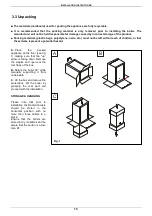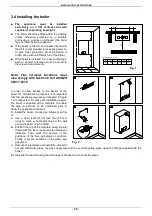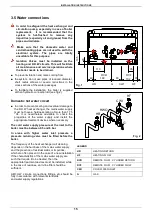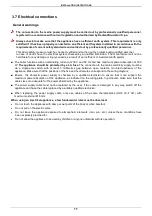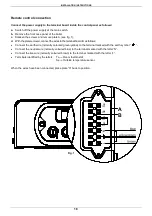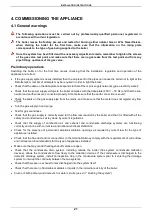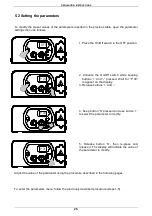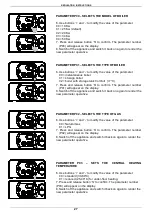
INSTALLATION INSTRUCTIONS
16
Central heating circuit
In order to prevent scaling or deposits in the primary heat exchanger, the mains supply water to the heating circuit must be
treated according to the requirements of local standards.
This treatment is indispensable in the case where the circuit is frequently topped-up or when the system is often either partially
or fully drained.
The outlet connection of the boiler safety valve must be connected to a discharge trap. The manufacturer will not be
held responsible for flooding caused by the operation of the safety valve in the case of system overpressure.
Condensate Drain
The condensate drain flexible pipe supplied with the boiler (conforming to UNI EN 677 standard) must be connected
to a proper condensate trap. The condensate discharge into the drainage system is allowed providing a condensate
trap (siphon) is installed.
Any condensate discharge pipe work external to the building (or in an unheated part of it) must be insulated to
protect against frost. Before switching the boiler On, check the correct condensate discharge.
3.6 Gas Connection
The connection to the gas supply must be carried out by professionally qualified personnel in
accordance with relevant standards:
When connecting the boiler to the gas supply pipe, only use appropriate washers and gas fittings. The
use of hemp, Teflon tape and similar materials is not allowed.
Before installing the boiler, check the following:
■ The pipe work must have a section appropriate for the flow rates requested and the pipe lengths installed, and
must be fitted with all the safety and control devices provided for by current standards. For Australia refer to
AS5601.
■ The gas supply line must be a minimum of a 22 mm diameter pipe with an uninterrupted supply from meter to
boiler and comply with current standards and regulations.
■
Check the internal and external seals of the gas supply system.
■ A gas shut-off valve must be installed upstream of the appliance
■ The gas pipe work must have and bigger or equal section to the one of the boiler.
■ Before starting up the boiler, make sure that the type of gas corresponds to that for which the appliance has
been set-up (see gas type label inside the boiler).
■ The gas supply pressure must be between the values reported on the rating plate (see gas type label inside the
boiler).
■ Prior to installation, it is good practice to ensure that there are no machining residues on the gas supply pipe.
■ Conversion of the appliance from natural gas to LPG or vice versa must be carried out by qualified
authorised
personnel.












